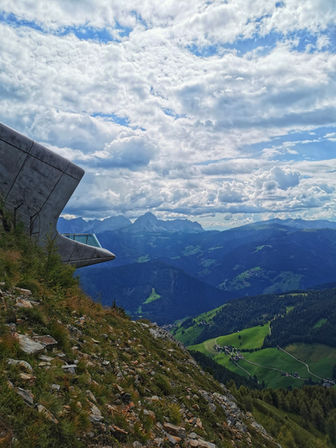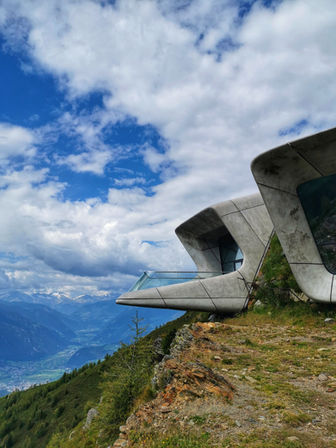
ITALY (DOLOMITES)
/Travelled 2020 August/
Before going to the mountains in Italy, first you have to decide to go East or West. Both Italian mountain ranges technically belong to the Alps. However most locals call the range in Italy's northeast corner the Dolomites, while those in the northwest, in the Valle d'Aosta, are the Alps.
They have pretty different landscape: Italian Alps are green and will remind you of the same Alps in Switzerland or Austria, while the Dolomites are more plain and rocky with less trees. We have chosen DOLOMITES (just because it was less similar to what we have seen before, travelling and skiing in the Alps).
As you select the area, the number of treks narrows down. Nevertheless, it is still difficult to choose.
Dolomites are famous for its via ferratas. However due to lack of time we decided to leave it for another trip, but it definitely stays in the bucket list.
Having rulled out via ferratas we were left with several reasonable choices for 3 days with reasonable driving distances from one place to another. We combined 3 really different treks; I am sure they all have appeared in your search if you have googled about trekking in Dolomites at least for 5 min.
We have used app ALL TRAILS for maps and treks, was very helpful.
Day 1. The Lakes
LAGO DI BRAES
First of all, it’s not really a trek; you can get to the lake by car. If you wish, of course you can walk there. There are some treks that include Lago di Braies on the way.
Lago is a supper crowded place so you will see all recommendations to get there as early as possible. HOWEVER I have to disagree because: firstly, everybody knows this recommendation and there are plenty of people even at 8 am., might as well be that it is less crowded later in the morning (however cannot confirm that), secondly, the sun hides behind the hill till 11am, so until then you will not have the perfect picture of that turquois water (BIG disappointment). Only when the sun comes up, you can see the lake in its whole beauty.
You can go around the lake clockwise or in reverse. Our recommendation is to go clockwise as there will be more of beautiful views in front of you not behind you.
It takes about one hour to go around the lake if you are not stopping – which is impossible to do. Most popular attraction is renting and rowboat and going to the middle of this really small lake. Yeah. I have to say, it really adds charm to the view, however we did not fall for this as there were like 50 boats on the lake and it felt a bit tacky. Also, we assumed the view is no better from the boat and you are not allowed to swim in the lake, so what’s the point.
If you decide to rent a boat, the price is 29 EUR per hour (you can get for half an hour, too)
Parking a (5 min walk from the lake) costs 6 EUR per day.
It is a very intense, busy, jammed with traffic and generally not a very pleasant city. Nevertheless, many travelers get to spend a night there, either when flying in or out of the country or on the way from Angkor Wat down to the islands. So, we will give you a few tips how to survive one day in Phnom Pen.
First things first, to enter Cambodia a visa is required for majority of foreigners. Visa on arrival can be obtained in Phnom Penh or Siem Reap (a town by Angkor Wat) international airports with a printed passport photo. However, the easiest way to get the visa is online at https://www.evisa.gov.kh.
Price: 30 USD.
There are several ways to get from the airport to the city center: train, bus, taxi or tuk-tuk.
Public transportation is the cheapest option, but the waiting time for a train or shuttle bus was too long at our time of arrival, so we chose to go by tuk-tuk. It was around 7-10 USD, twice cheaper than taxi, and quite fun. Bearing in mind all the traffic, probably it was also two times faster.
Travel time: around 30 min.



LAGO DI SORAPIS
It is a day’s hike at a slow pace (can be done in 4-5 hours at a quick pace and if you do not wish to chill by the lake). Most maps and suggestions will tell you to take the same path to go there and back, BUT it is also possible to make sort of a loop.
The trail starts by Passo tre Croci. The beginning of the trail is not super scenic, but it pays back on the road. If you take the alternative loop road you will meet zero people for at least an hour, on the contrary to the super busy main trail.
The road leads all the way down for about one hour and you cannot stop thinking that eventually you will have to cover this elevation change. When the moment comes, it is two hours of steep walk. The trail is wet in some places so on the rainy days it should be very slippery. No doubt, the views are stunning, and lake has its popularity for a reason. If you are dreaming abut cold beer one you reach the top- you have to take it with you, because there is no bar or shop on top.
Taking the main trail back we came across some steep drops that might challenge people with fear of heights and inspire those with adrenaline addiction. The road back may be quite busy in the afternoon so get ready to arm yourself with patience.



Day 2.
The Chimneys: TRE CIME DI LAVAREDO
No doubt it shall be included in your itinerary. Period.
This route begins at Rifugio Auronzo and heads north to Rifugio Lavaredo and finally Rifugio Locatelli. You can drive there by (there is a paid parking lot) or catch a bus from the nearby Cortina d’Ampezzo or Dobbiaco OR you can walk all the way. The bus costs 8 EUR return ticket (4 EUR one way). Check the timing for the last bus to come back, not to be forced to walk if you miss it. (The took the last bus downhill around 5 pm)
We have parked by Misurina lake for free and walked extra 7 km to Rifugio Auronzo which was an easy walk with very nice views, free grazing horses and cows. Super exiting!
The trail start counter clockwise and is mostly flat but with minimal shade so make sure to bring everything you need for six hours in the sun. The stunning views follow you the whole trail making it one of most popular ones in the Dolomites, revealing the majesty of columned peaks and the real differences between the Dolomites and the Alps. There are several bars on the trail to get a snack or a drink.
Day 3.
They Valley and the Edge: SECEDA
Seceda summit is definitely one of the signature views of the Dolomites. It can be reached by cable cars from Ortisei or fromSt.Christina.
Once you get off the cable car it takes about two hours of easy hike from St.Christina to station to the edge of Seceda. When coming from Ortisei side, you can reach it in 5 min from the top station of the cable car. Keep in mind that Ortisei lift is more expensive and you have to decide in advance if you are taking round trip or one way. All the trails lay in the valley and offer completely different views compared with Tre Cime. All the hikes here are easy or intermediate.


Bonus trek: MMM CORONES
Messner Mountain Museum designed by Zaha Hadid Architects is a monument for beauty on Mount Kronplatz. MMM Corones is the final gemstone of the mountaineering legend’s Reinhold Messner's museum series. Dedicated to the great walls of the world, the museum at 2275 m above sea-level embodies the most prestigious discipline in mountaineering and offers a unique glimpse of the lives of mountaineers and climbers.
Moreover, the design of the museum is as impressive as the views that surround it.
How to get there: in winter it’s just 100 meters detour from the ski lifts. In summer time you can hike up by a simple road or take gondola for 15 EUR round trip (make sure to note the opening hours: https://www.kronplatz.com/en/kronplatz/ski-lifts-slopes/ski-lifts). There are several operating lifts (different pricing), so check out which one is more convenient for you.
Once you are on the top of Kronplatz take some time to visit Museum of Mountain photography. Even if you are not into photography, the views of museum lobby will astound you.









